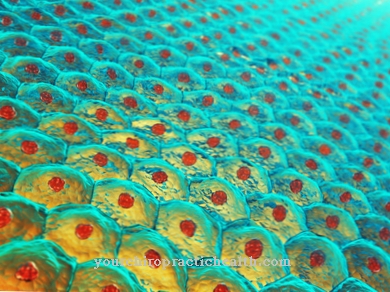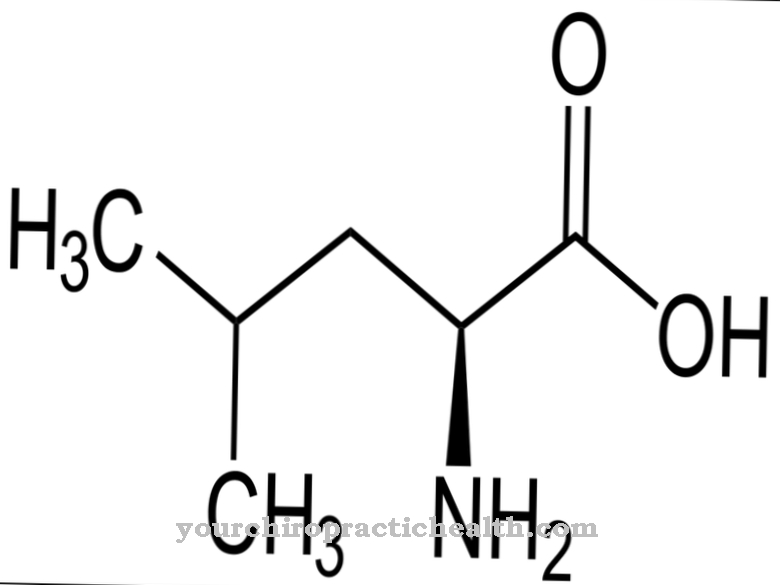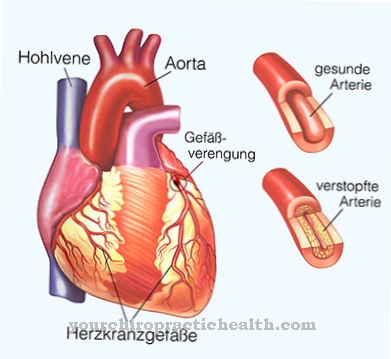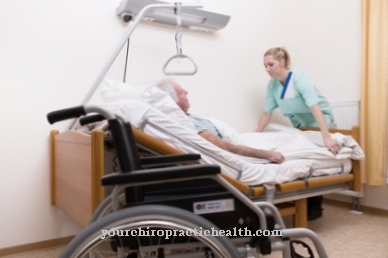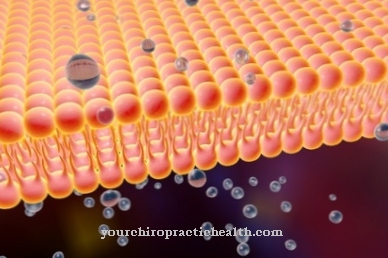Many people suffer from Skin bleeding. What exactly this is, what may be the cause and how this bleeding can be treated, is explained in more detail in the following article.
What is skin bleeding?

Skin haemorrhage is understood, as the name may already indicate, blood leakage from the blood vessels into the skin or into the mucous membranes. This bleeding is usually dark red, but can also turn red-brown, green or yellow as the healing process progresses.
They are often in the form of a point, usually appear sporadically and are about the size of the head of a pin, but they can also occur over a large area. This skin bleeding usually occurs on the extremities, i.e. arms or legs, or in the chest area.
The most pronounced form of skin bleeding is called a hematoma or better known as a bruise or "bruise", which almost everyone has suffered from at least once.
causes
The skin bleeding is harmless and often only a visual problem. However, this bleeding can also be a symptom of a more serious illness. Inflammation of the blood vessels is a disease that could possibly cause the skin to bleed.
This disease often damages the walls of the blood vessels, causing blood to leak out. Another cause could be blood coagulation disorders. This often occurs with various blood diseases. Blood congestion can also be the reason for skin bleeding, as this leads to excessive pressure in the blood vessels, which is why they are damaged.
In addition, skin bleeding is often seen in people who suffer from platelet deficiency, for example as a result of chemotherapy. However, there are more harmless triggers that lead to skin bleeding, including a simple injury (fall or abrasion).
You can find your medication here
➔ Drugs for wound treatment and injuriesDiseases with this symptom
- Bleeding disorder
- Typhus
- measles
- Abrasion
- leukemia
- Plasmacytoma
- Henoch-Schönlein purpura
- psoriasis
- high blood pressure
Diagnosis & course
The diagnosis of skin bleeding is relatively easy and you don't need to be a doctor to do this. Bleeding from the skin can be easily seen and identified. Nevertheless, if you suffer from unusual skin bleeding, you should definitely consult a doctor so that he can identify the cause of the skin bleeding.
This is so important because this bleeding is often just a symptom of a more serious illness. In order to diagnose this, you need medical knowledge and various examinations must be carried out. If this does not happen, it can lead to the entire organism being endangered.
Even if the diagnosis can be very different, the course is usually the same. First, the red spots or dots appear, i.e. the skin bleeding. During the healing process, the red spots change color. They often turn bluish at first, before they turn yellow or green, before finally disappearing completely.
Complications
In most cases of bleeding from the skin, complications of little concern are found. If left untreated, skin bleeding can expand. The bleeding goes deeper into the body or the affected area under the skin increases. There are bruises or bruises.
These are painful and uncomfortable when pressure is applied. The same symptoms can occur when wearing tight clothing. The blood loss is associated with increased cardiac activity. If the condition persists, this leads to stress on the organism. In rare cases, dizziness or a so-called dizziness occur.
The initial treatment by cooling or immobilization in the event of skin bleeding is usually without further complications. If ointments are used, the individual side effects should be observed. In addition, depending on the preparation, an intolerance may occur. If an infection is causing the skin to bleed, drugs such as antibiotics are usually used.
These can cause nausea, loss of appetite, vomiting, or diarrhea. If the skin bleeding was triggered by high blood pressure, measures to reduce it must be taken. Depending on the cause, this can be done with medication, but also with psychological support. In some cases, the skin bleeding is due to a bleeding disorder. Medicines or natural remedies are administered so that the blood can thin and flow better again.
When should you go to the doctor?
Popularly, skin bleeding is referred to as a bruise or bruise. Another specialist but common term for this is hematoma. The causes are mostly previous impacts on the affected areas, including falling, occasionally pinching or sucking. For most people, such skin bleeding is trivial and no reason to go to a doctor about it. As a rule, skin bleeding heals on its own within a few days. However, there are a few exceptions where it is strongly advisable to see a doctor if the skin is bleeding.
One cause of pathological skin bleeding that requires treatment is blood coagulation disorders. Blood congestion can also trigger skin bleeding after high pressure on the blood vessels has caused them to burst. Inflamed blood vessels are another cause. On top of that, skin bleeding occurs during chemotherapy if it resulted in a platelet deficiency.
The first point of contact for clarifying skin bleeding is your family doctor. Depending on the suspected cause, he can refer to specialists such as internists, dermatologists or oncologists. In the case of skin bleeding, the patient's assessment of whether or not a doctor's visit is necessary is also required. If skin bleeding occurs several times for no apparent reason, this is definitely reason enough to consult a doctor.
Doctors & therapists in your area
Treatment & Therapy
The treatment of skin bleeding can look very different. The diagnosis of the cause is of course decisive for this. If, for example, a coagulation disorder of the blood and thus too high a pressure in the blood vessels are the trigger for the skin bleeding, the patient usually has to take so-called "blood thinners" so that the blood can flow properly again and it does not build up.
However, if an infection or inflammation of the blood vessels is the cause, this is often treated with antibiotics. If the bleeding is caused by an injury, however, often only cooling down and waiting will help.
Outlook & forecast
In many cases, the bleeding from the skin is a bruise or bruise. As long as there are no further complaints or problems, treatment by the doctor is not necessary and the skin bleeding will go away by itself. In most cases, the affected area of the skin is tender and painful when touched.The color of the skin bleeding can change as it heals and can vary between blue, green, and yellow. This is a common symptom.
If the skin bleeding is severe, there may be increased blood loss. The affected person sometimes suffers from headaches, dizziness and nausea. Diarrhea and vomiting can also occur. In this case, the skin bleeding is treated with medication.
If the skin bleeding occurs during chemotherapy, no special treatment is necessary. If the pressure in the blood vessels increases, blood-thinning medication is administered to allow the blood to flow out again. There are no further complaints here. However, it is advisable to determine the cause of the high blood pressure and treat it.
You can find your medication here
➔ Drugs for wound treatment and injuriesprevention
There is no specific way to prevent skin bleeding. Of course there are some factors that favor the causes, such as smoking, that should be avoided, but these symptoms can still occur. However, one should in principle pay attention to a healthy lifestyle.
This includes drinking enough, eating healthy, exercising regularly and trying to avoid injuries. Even if this is not a guarantee that you will never suffer from skin bleeding, you are generally less at risk and have a stronger immune system, which means that many diseases can be avoided.
You can do that yourself
Some bleeding from the skin is intermittent. Those affected are therefore advised to make temporary adjustments to everyday life. Long-term changes should be made if the bleeding is permanent. These cannot replace therapy. However, they make everyday life easier and can complement existing treatment measures.
Anyone who suffers from skin bleeding should protect themselves from injuries and pay more attention to warning signs of threatening bleeding. For prevention, contact-intensive sports should be avoided. In addition, the skin should be covered as much as possible. During daily clothing, make sure that the skin is protected, but not dented.
Further self-help measures include skill training. This is offered by various therapists. The purpose of this training course is to minimize the general risk of injury by sustainably improving your dexterity. In addition to these preventive lessons, the therapists are on hand with advice and action. These provide valuable information on coping with difficult situations. This enables the emergency to be tested.
Attending a self-help group can also be advisable. The exchange with other affected persons leads to massive improvements in mental health. Depression and similar negative moods are prevented. The general attitude towards life is improved so that psychosomatoses, which can make everyday life considerably more difficult, do not even develop.


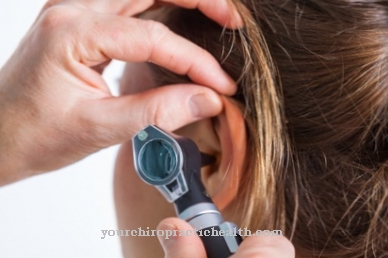
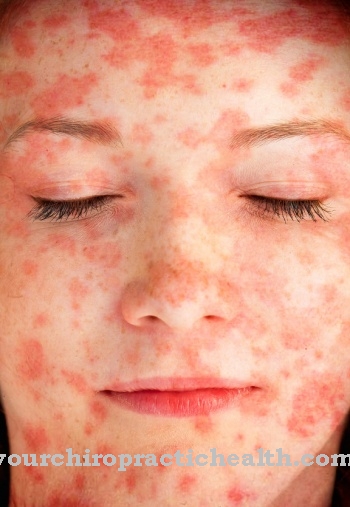

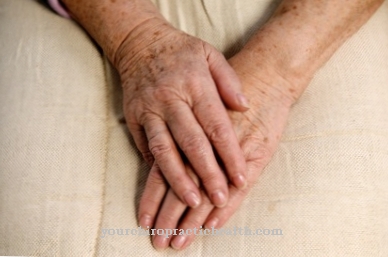


.jpg)
